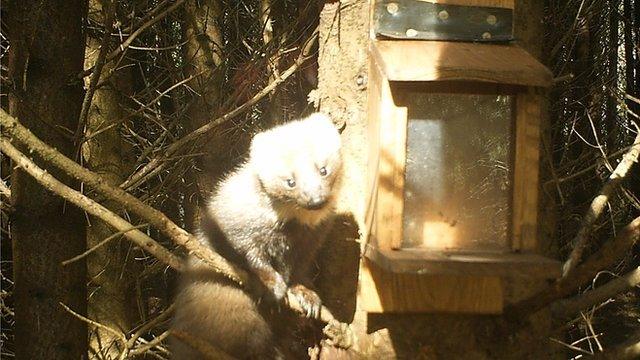Pine marten has 'phenomenal resurgence' across Northern Ireland
- Published
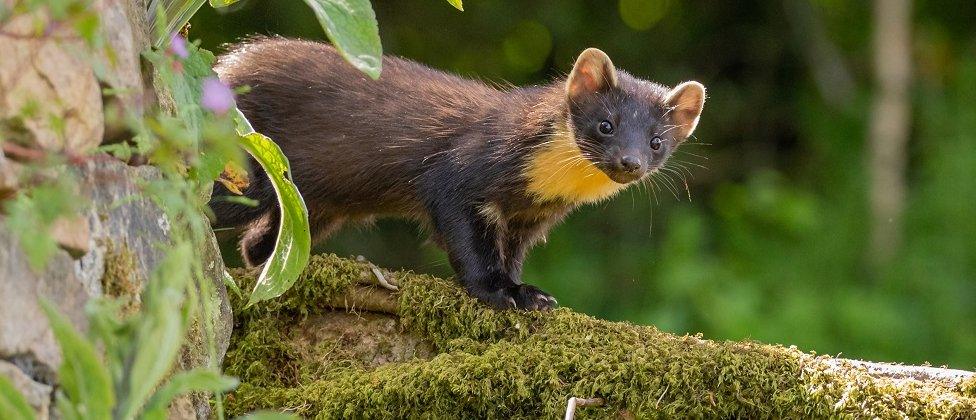
Pine martens are considered to be one of Northern Ireland's rarest native mammals
The presence of pine martens in Northern Ireland has almost doubled in five years, according to a new survey.
Ulster Wildlife said the priority species is undergoing a "phenomenal resurgence".
Pine martens are now present in all six counties, marking a significant expansion beyond their traditional stronghold in County Fermanagh.
It is hoped their recovery will boost the red squirrel which has held its population numbers.
Considered one of Northern Ireland's rarest native mammals, the pine marten is a cat-sized carnivore related to the stoat.
Ulster Wildlife's 2022 survey of pine martens and squirrels was carried out across 218 woodlands in Northern Ireland using camera traps and feeders with participation from 15 partners including National Trust and Mourne Heritage Trust.
It found that pine martens were present in almost double the number of sites compared to a previous survey five years ago.
The survey also shows that the number of woodlands surveyed with red squirrels present remains comparable to 2017, suggesting that the population is holding steady at a landscape-scale.
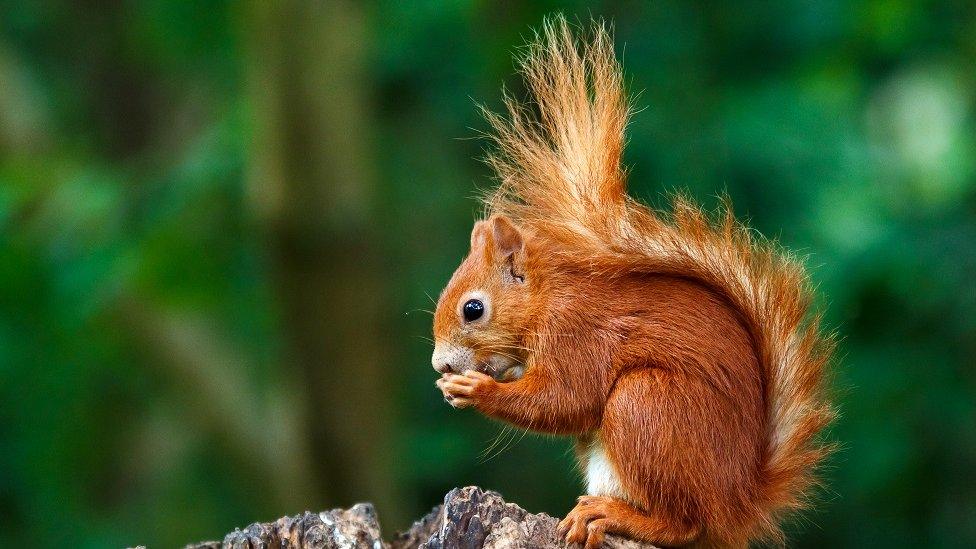
The survey also shows the red squirrel population is holding steady
Ulster Wildlife said its latest findings indicate a "remarkable turnaround".
"It's fantastic to see pine martens spreading and returning to areas where they haven't been seen for many years," said priority species officer Ross McIlwrath.
He hopes the pine marten's recovery will boost red squirrel populations, which were previously decimated by the introduction of grey squirrels from North America in the 19th Century.
Research from Queen's University Belfast shows differing responses from both species when exposed to pine marten scent, external.
Grey squirrels do not change their behaviour or become more vigilant, therefore leaving them more vulnerable to the predator.
This is known as "the pine marten effect".
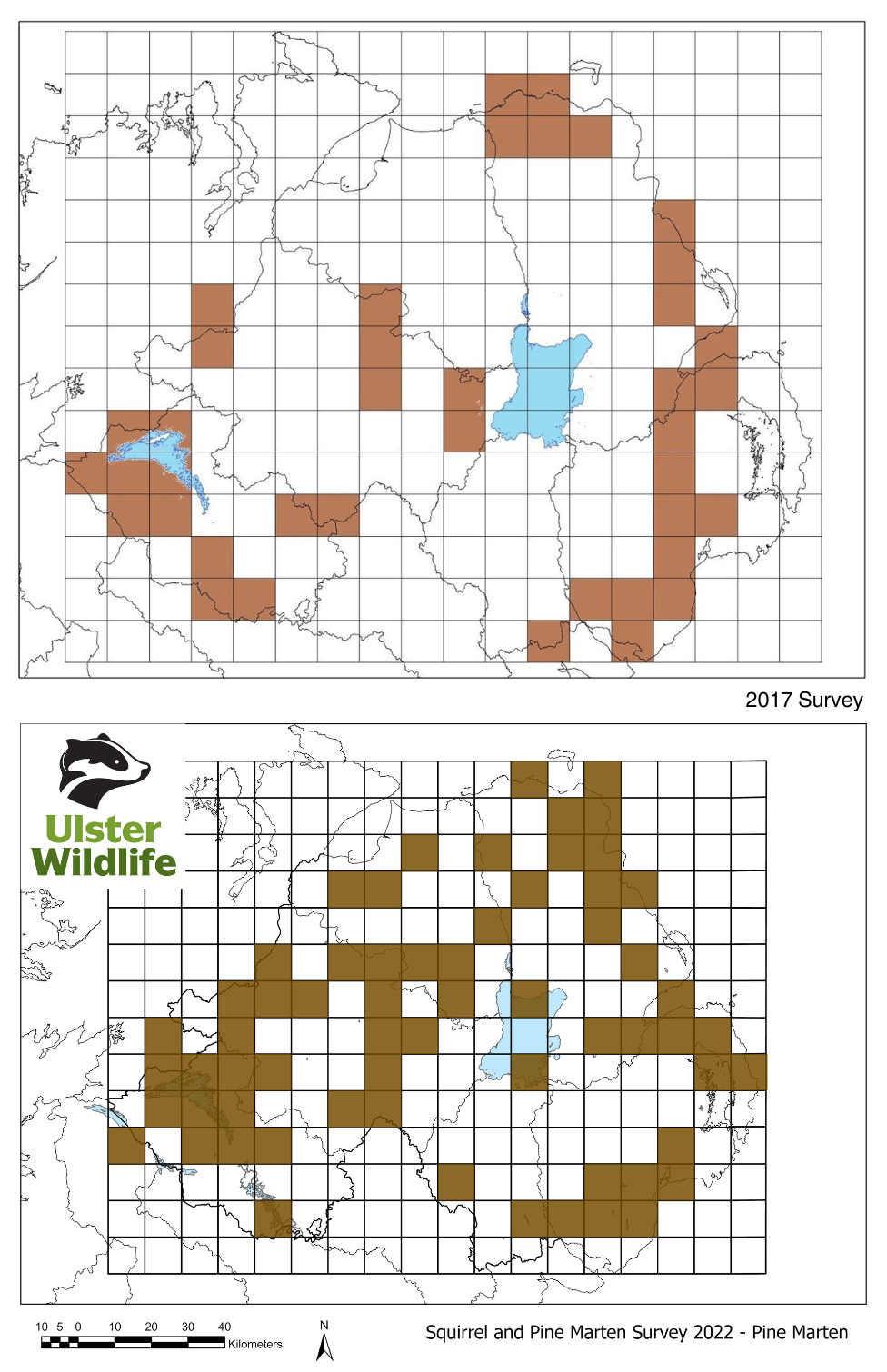
The presence of pine martens in Northern Ireland has almost doubled in five years
The survey shows that the presence of the grey squirrel has declined slightly since 2017, most notably in woodlands surveyed in the west.
County Fermanagh has maintained its status as an area free from grey squirrels.
"We are seeing that in areas with a strong pine marten presence, greys are retracting.
"Red squirrels have adapted to live alongside these native predators, unlike their non-native counterparts," Mr McIlwrath added.
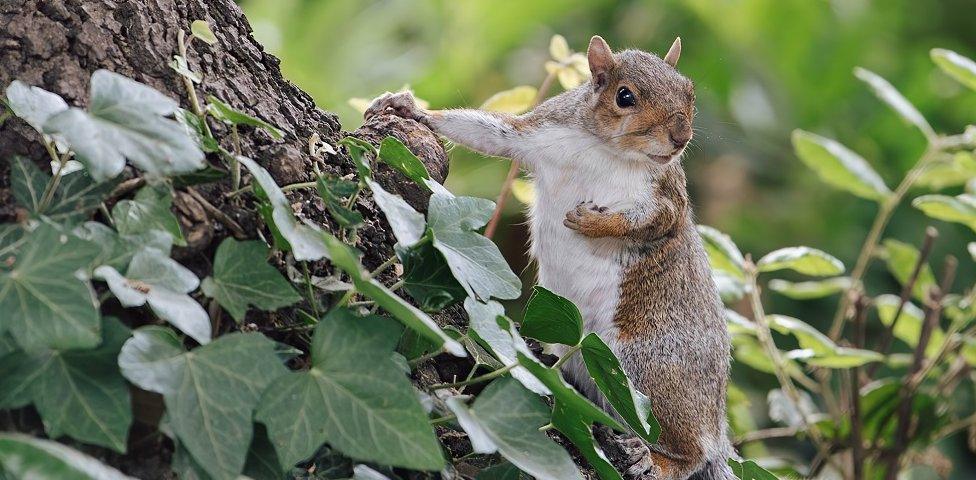
The "pine marten effect" has seen a slight decline in grey squirrel numbers
However, he warned against complacency as red squirrels are still threatened by the grey's presence and habitat destruction.
"Many red squirrels have disappeared from small areas of woodlands and urban areas, and have become increasingly isolated and fragmented," he said.
"We need to continue to work with partners, landowners and local conservation groups to control the spread of greys, create a more connected landscape to allow reds to spread and recover, and ensure continued long-term monitoring of these three species."
Related topics
- Published6 July 2015
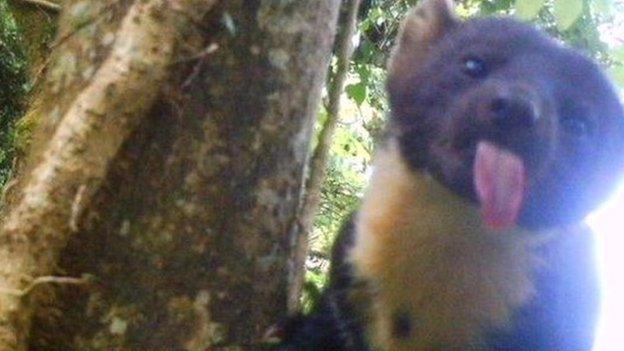
- Published12 January 2022
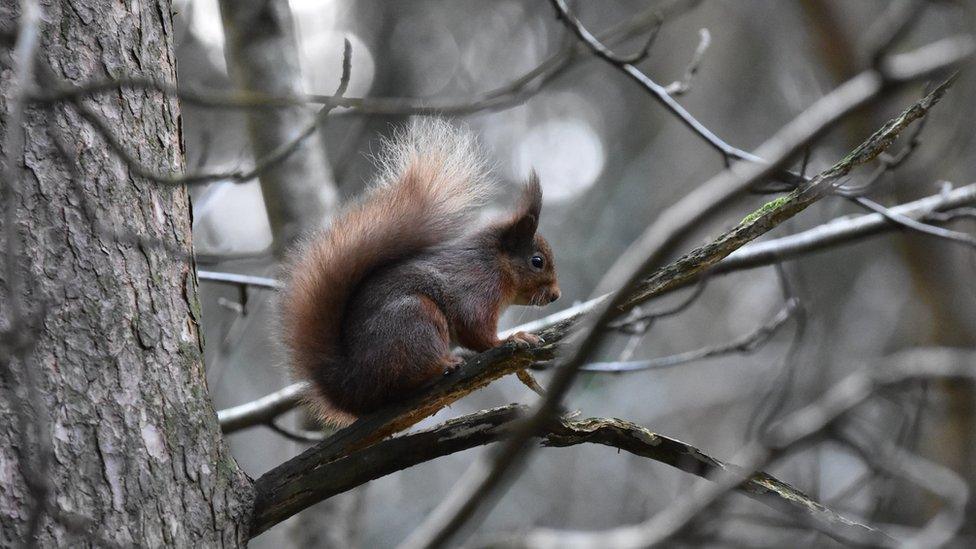
- Published18 April 2023

- Published30 April 2014
